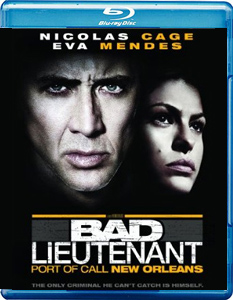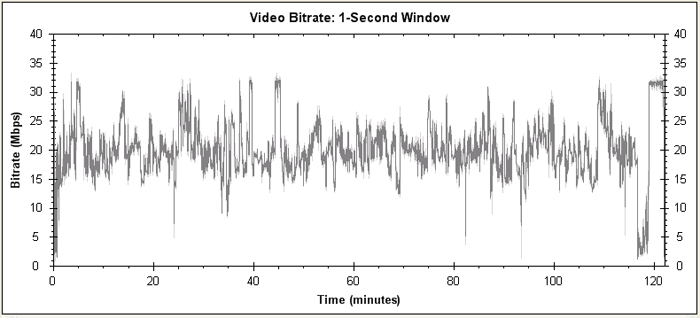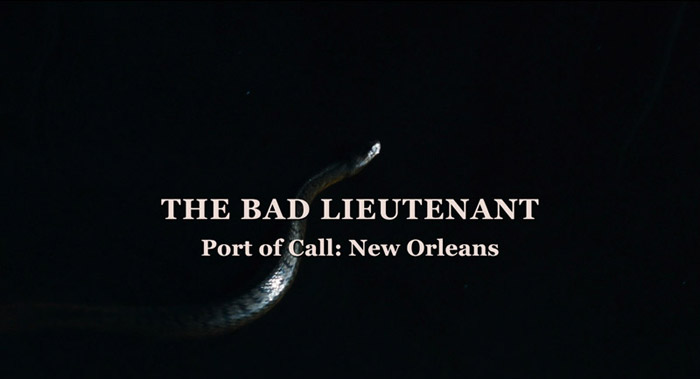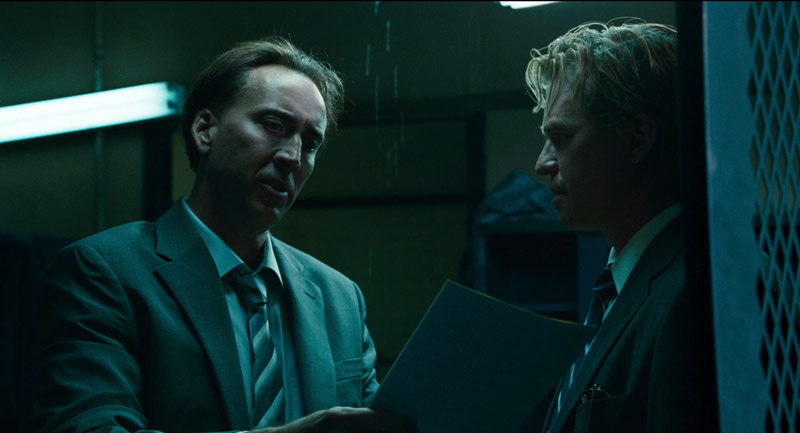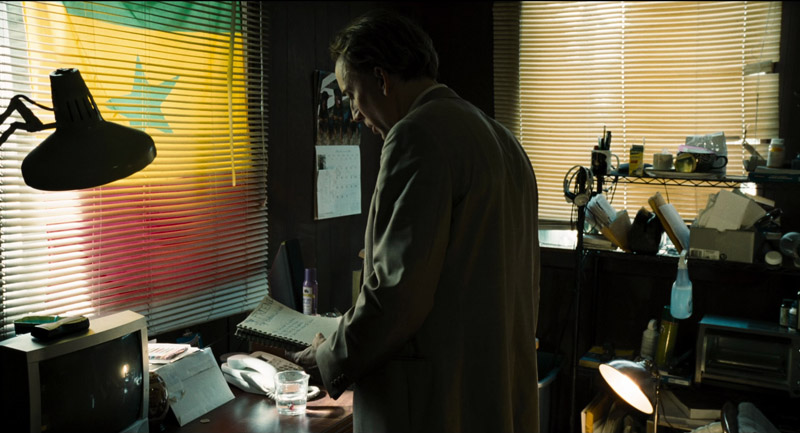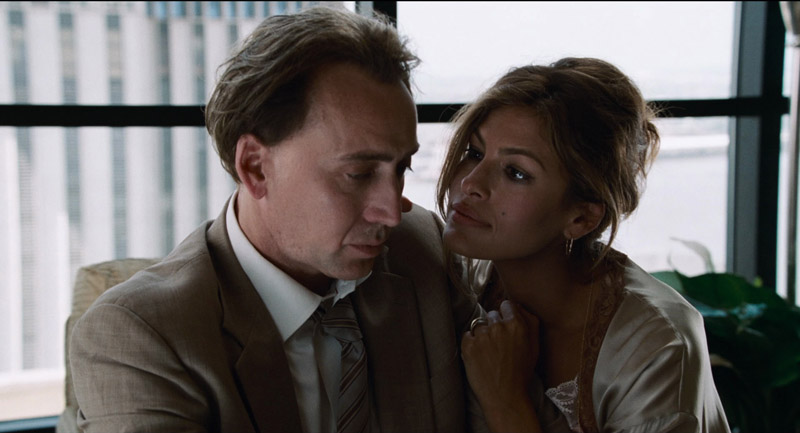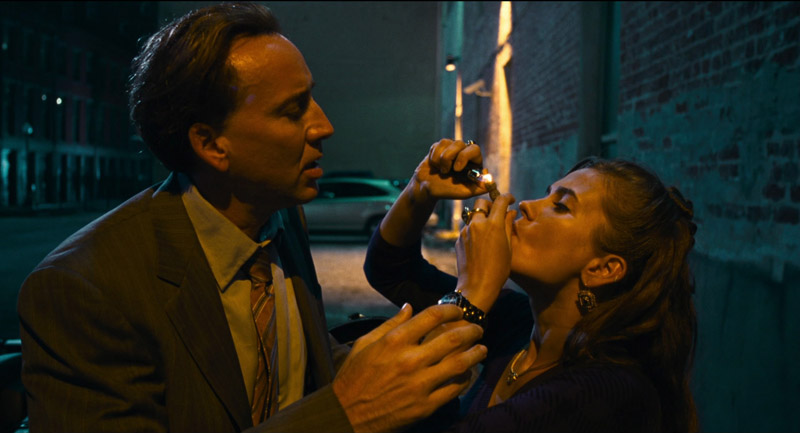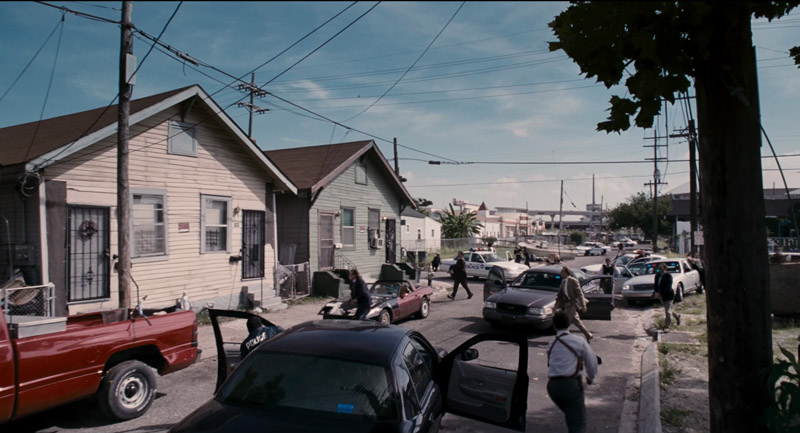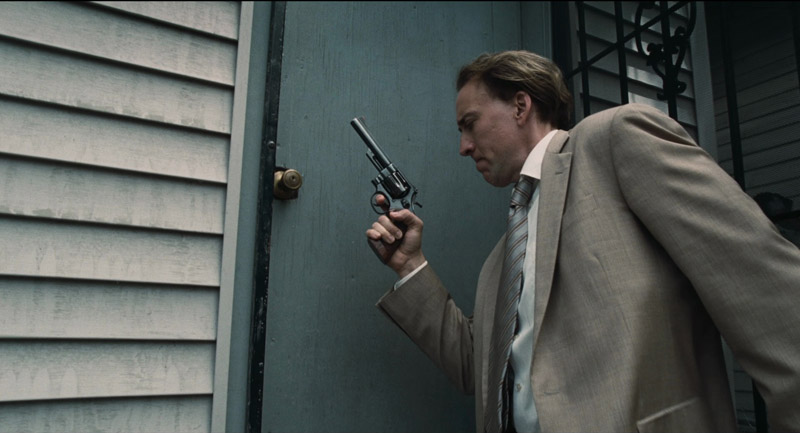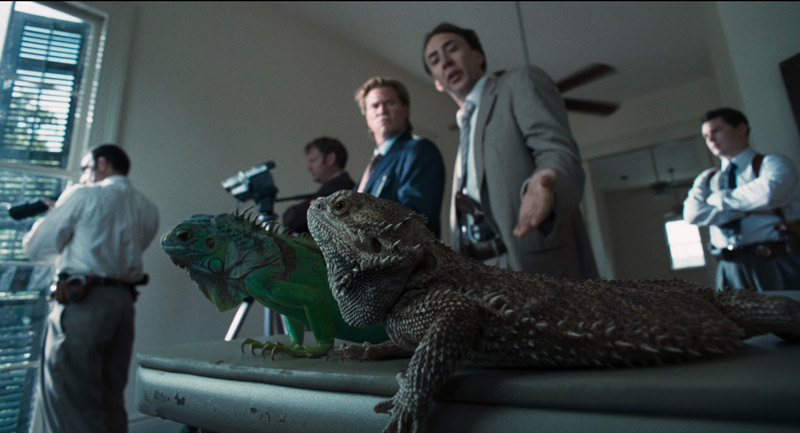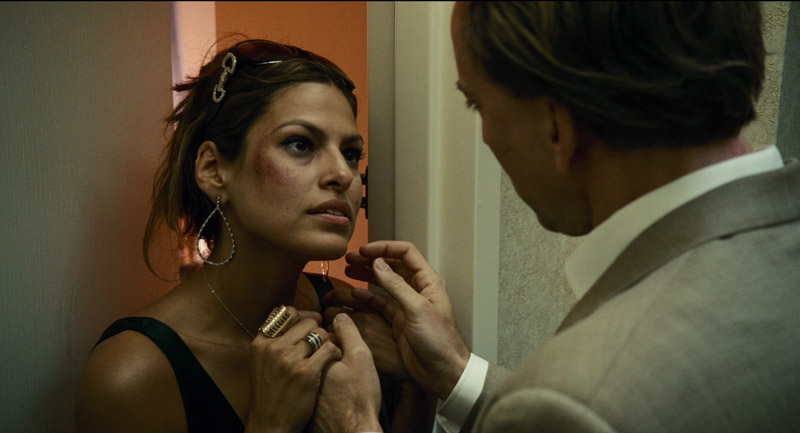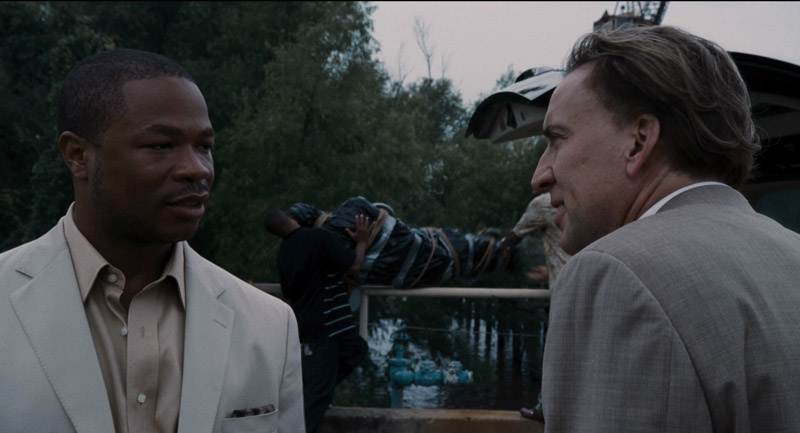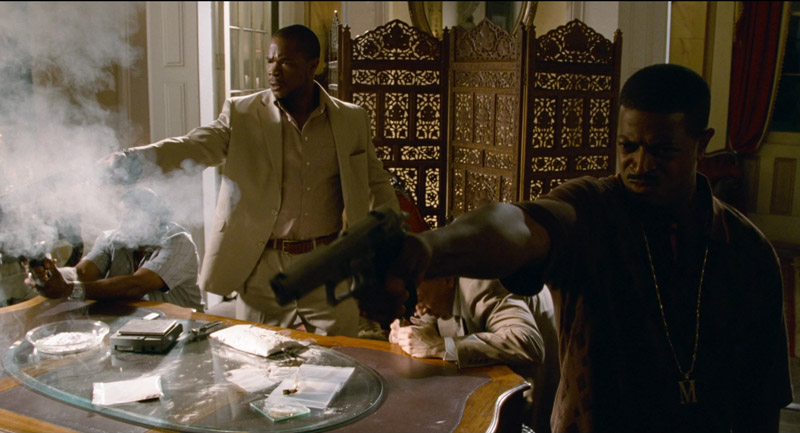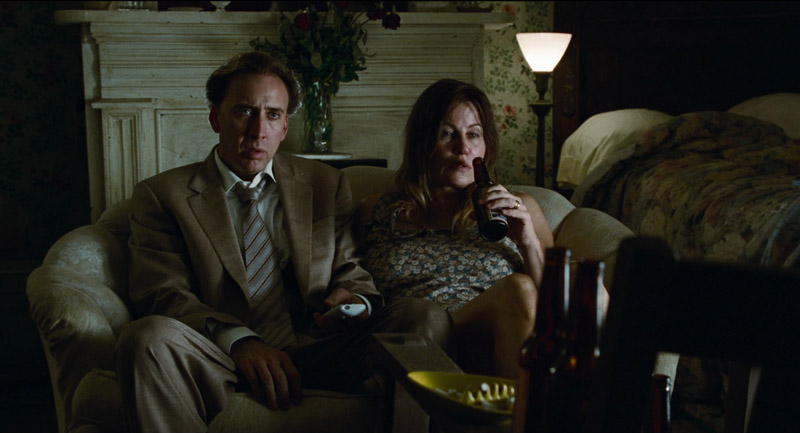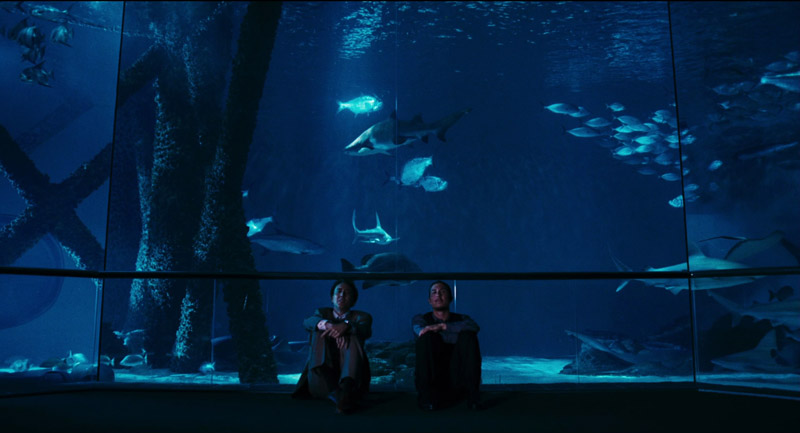Review by Leonard Norwitz
Studio:
Theatrical: Edward R. Pressman, Saturn Films & Osiris
Blu-ray: First Look Studios
Disc:
Region: 'A'
(B + C untested)
Runtime: 2:02:09.363
Disc Size: 24,334,505,256 bytes
Feature Size: 21,943,474,176 bytes
Video Bitrate: 19.98 Mbps
Chapters: 13
Case: Standard Blu-ray case
Release date: April 6th, 2010
Video:
Aspect ratio: 1.85:1
Resolution: 1080p / 23.976 fps
Video codec: MPEG-4 AVC Video
Audio:
Dolby TrueHD Audio English 1204 kbps 5.1 / 48 kHz / 1204
kbps / 16-bit (AC3 Core: 5.1 / 48 kHz / 640 kbps)
Dolby Digital Audio English 256 kbps 2.0 / 48 kHz / 256 kbps
Subtitles:
English (SDH), Spanish, none
Extras:
• Digital Photo Book by Lena Herzog – (8:55)
• The Making of The Bad Lieutenant : Port of Call New Orleans –
in SD (31:10)
• Theatrical Trailers
The Film:
7
Werner Herzog's movie about a cop addicted to street drugs,
street crime and street policing is fascinating enough that it
might be fun to sit with a few critics for a spell, keeping in
mind Roger Ebert's dictum that "It's not what a movie is about
but how it's about it."
Roger Ebert (Chicago Sun Times):
In the gallery of bad cops, Terence McDonagh belongs in the
first room. Everyone will think of Harvey Keitel's lieutenant in
Abel Ferrara's masterpiece "Bad Lieutenant" (1993) for the
obvious reason. I hope this film inspires you to seek out that
one. It deserves to be sought. Ferrara is Shakespearean in his
tragedy, Herzog more like Cormac McCarthy [author of "No Country
for Old Men" – LN]. Sometimes on the road to hell you can't help
but laugh.
The details of the crime need not concern us. Just admire the
feel of the film. Peter Zeitlinger's cinematography creates a
New Orleans unleavened by the picturesque. Herzog as always
pokes around for the odd detail. Everyone is talking about the
shots of the iguanas and the alligator, staring with cold
reptilian eyes. Who else but Herzog would hold on their gaze?
Who else would foreground them, placing the action in the
background? Who but Cage could regard an iguana sideways in a
look of suspicion and disquiet? You need to keep an eye on an
iguana. The bastards are always up to something.
Roger Ebert (Chicago Sun Times)
Betsy Sharkey (L.A. Times):
Director Werner Herzog opens the film with the snake just so
we're clear that he will be exposing the seductive and
duplicitous underbelly of things from the start. It's a
beautiful shot, dark and silvery, with a water moccasin moving
inland through the rising black tide of Hurricane Katrina.
Enter Cage's detective Terence McDonagh, just part of the debris
kicked up by the storm. There's a jail cell, a forgotten
prisoner struggling to keep his head above water as Terence and
his partner Stevie (Val Kilmer) look on, making bets on how long
he'll last. In the first of many ripple effects, a last-minute
rescue earns Terence a medal of honor, a promotion, a serious
back injury and a cocaine habit to ease the pain. So we have the
setup and the bad cop that Herzog will push into the deep bayou
muck, human and otherwise, that Katrina leaves behind. You can
almost see the director smile as Terence descends into a
netherworld of drugs and gambling and murder investigations, the
stakes getting higher, the risks greater, the world crazier.
Betsy Sharkey (L.A. Times)
A.O. Scott (NY Times):
“Bad Lieutenant: Port of Call New Orleans” — what an ungainly
title for a movie. What does it mean? What kind of sense does it
make? You might ask the same questions of the film itself,
directed by Werner Herzog and related, by some equally puzzling
movie-business genealogy, to another “Bad Lieutenant,” Abel
Ferrara’s 1992 tour of New York law-enforcement hell. Neither
remake nor sequel, this “Bad Lieutenant” is its own special
fever-swamp of a movie, an anarchist film noir that seems, at
times, almost as unhinged as its protagonist.
Fueled by Nicolas Cage’s performance — which requires adjectives
as yet uncoined, typed with both the caps-lock key and the
italics button engaged — Mr. Herzog’s film is a pulpy, glorious
mess. Its maniacal unpredictability is such a blast that it
reminds you just how tidy and dull most crime thrillers are
these days.
A.O. Scott (NY Times)
. . . and there are those who didn't find a center:
David Edelstein (New York Magazine):
If there’s a sure thing in movies, it’s that if you cast Nicolas
Cage in a role in which he goes crazy, he’ll rise to the
occasion and keep on rising until he seems even loonier than his
character. In Bad Lieutenant: Port of Call New Orleans (a sequel
to Abel Ferrara’s Bad Lieutenant in name only), he plays Terence
McDonagh, whose back is injured as he saves a prisoner when the
levees break. As he moves from prescription painkillers to huge
amounts of crack and smack, his shoulders stiffen, eyes bulge,
and lips pull back to reveal hungry choppers. He’s like a
vampirized Richard Nixon. Werner Herzog directed, deftly at
first (plenty of noir atmosphere) but with escalating wigginess,
as if trying to keep up with his leading man. Talk about the
burden of dreams!
David Edelstein (New York Magazine)
David Denby (The New Yorker)
The movie is an approximate remake of the notorious Abel Ferrara
film of 1992, in which Harvey Keitel bullied, thieved, snorted,
and fornicated his way to immortality as a crooked and sometimes
naked New York cop. Herzog, in his ineffably high-minded manner,
has bristled at the “theoreticians of cinema” who would compare
his picture with the earlier one, which he says he has not seen.
(“Go for it, losers,” he tells them.) I am not a theoretician,
but, as a mere vulgar critic, I have to report that Ferrara’s
work was a highly sexual affair, with a real sense of pleasure
in violation—a movie immersed in sub-Scorsesean despair, guilt,
self-indulgence, and redemption. Herzog’s film, by contrast, is
both an intermittent police procedural and an outrageously
diverting celebration of crack mania. . . The movie is a mess,
but it’s certainly not dull. At the end, McDonagh asks, “Do
fishes dream?” That’s the kind of question Herzog finds
interesting, and it inspires many questions of comparable
fascination: Do clouds have an unconscious? Do pinball machines
steal the souls of the drunken truck drivers who pull their
levers? Conundrums, like wandering lizards, pile up at the gates
of the cinema.
David Denby (The New Yorker)
Image:
7/8
NOTE:
The below
Blu-ray
captures were taken directly from the
Blu-ray
disc.
The first number indicates a relative level of excellence
compared to other Blu-ray video discs on a ten-point scale. The
second number places this image along the full range of DVD and
Blu-ray discs.
As usual, First Look satisfies itself with a single-layer disc,
skimping some on extra features and their presentation. Still,
the AVC encode with a bit rate averaging in the low 20s does a
journeyman's job of conveying the shadowy, reptilian world of
light and color that Peter Zeitlinger, Herzog's DP of choice
lately, created for Lt. McDonagh to inhabit in his head and out
of it. The transfer is spotless, with no distracting artifacts,
enhancements. There is some flare in strong backlit situations,
such as in the sports bar where McDonagh and his bookie meet,
but that's likely to be in the source material due to the way it
was shot. The color fringing in those situations, however, is
not. Blacks - and there's a good deal of them - are noiseless.
Sharpness and color varies with lighting and intention –
sharpness can be quite good at times (check out the lieutenant's
threads); color is spot on.
CLICK EACH
BLU-RAY
CAPTURE TO SEE ALL IMAGES IN FULL 1920X1080 RESOLUTION
Audio & Music:
7/8
The Dolby TrueHD 5.1 is a crackhead's daydream. In the police
bull pen or at a bar or restaurant, the sound design implies
that there is no one else in the room but McDonagh and the
person he's talking to. All other conversations and effects are
muted into meaninglessness. (Isn't drug-induced narcissism
grand!) In other scenes a peculiar LFE inserts itself into the
mix. It's low and subdued, and has almost no definition, but I
can't for the life of me figure out what it's doing there. From
time to time we are treated with Mark Isham's atmospheric score,
reminiscent of Daniel Licht's music for Dexter. Here the
soundstage, which is sometimes constricted and front-directed,
opens up with a voluptuous sultriness that would seem out of
place if it weren't for all the other excesses of image,
performance and character. Here, the music comes to life as if
the band in your room just woke up.
Operations:
6
Forced, but skippable previews are foist upon us with no direct
recourse to the main menu. Once there, the design is in keeping
with the noirish, yet, colorful style of the movie. The font is
small for my taste, but there's not much of a chance you'll get
lost.
Extras:
4
Besides a couple of trailers, there are two extra features: a
beautifully imaged album of photographs taken on the set by
Herzog's wife, Lena. You can let them self advance or take over
on manual drive. The 30-minute making of piece shows off Maestro
Herzog setting up shots and our seeing how that materializes
into something like the finished product. Werner enjoys talking
about himself and his creative process here as elsewhere, and
these intermissions are always fascinating. We also hear from a
few members of the cast. Val Kilmer, who is seriously underused
in the film, gets in a few words edgewise.
|
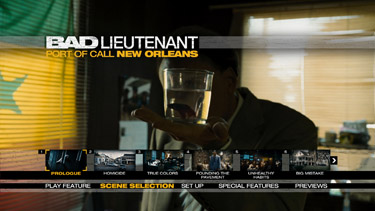
|
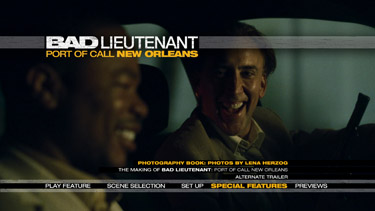
|
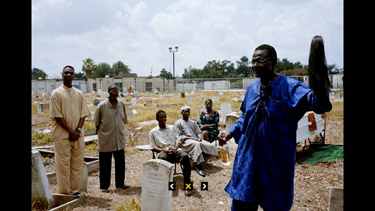 |
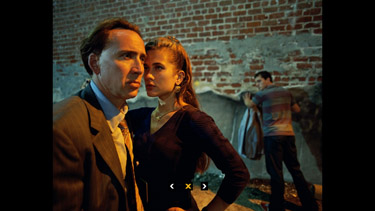 |
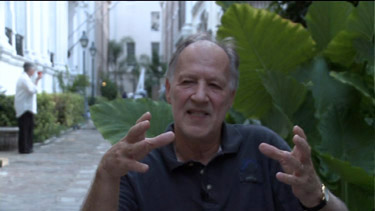 |
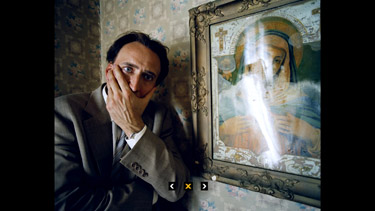 |
Bottom line:
8
I admit I couldn't quite get a handle on Herzog's lingering
images of reptiles. (The iguana on my back, perhaps?) And I'm
still uncertain about its Taxi Driver ending. Perhaps I will
sort it all out next time around, which I am looking forward to
when unsuspecting company (the best kind) comes over for a movie
fix. As you can tell from the aforequoted critics, regardless of
how they come down on the movie, everyone thinks Cage is a
knockout of one sort or other. I rather liked his Castor Troy
impersonation that alternated without notice with his Jimmy
Stewart. Except for a minor niggle or two, the image and audio
are quite good, though some way from demonstration material –
not that the movie would have argued for it. The price is right,
so: Light Up.
Leonard Norwitz
March 21st, 2010
![]()
![]()

![]()
![]()

![]()
![]()

![]()
![]()
